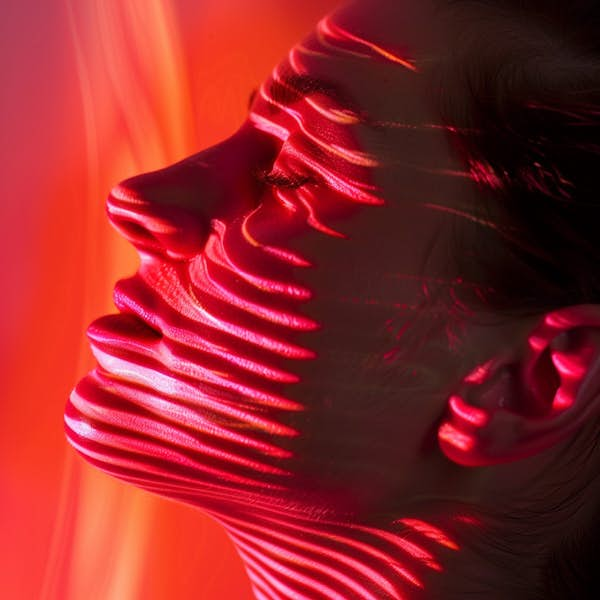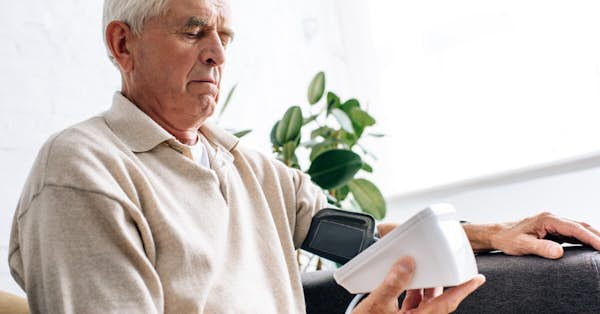
Do It Yourself: What's The Strongest Red Light Therapy At Home?
Light is necessary for all living things on Earth. Energy from the Sun provides the energy for life. Scientifically it's due to the chemical reaction of light hitting an electron and changing its orbit. This energy can be in the form of a wave, a particle or even a photon. And light energy is one of the most powerful things ever discovered-- think quantum physics and the nuclear bomb. But while light can be used to grow things or destroy things, it can also be used to heal.
In this article we'll take a closer look at how light therapy, especially red light therapy, can help you grow stronger and healthier. We'll also explore the different ways you can try red light therapy at home, on your own, so you can determine what's the best and strongest red light therapy at home for you or your loved ones.
Key Takeaways
-
Red light therapy is often used for skin conditions, beauty purposes and for treating hair loss, but its health benefits go way beyond these practices. Red light therapy's influences on inflammation, blood circulation and the body's healing processes are helping to widen its medical uses.
-
The low-level red light and near infrared red light emitted by red light therapy devices increase the activity and energy supply of your cells to boost healing processes. During this bioenergetic boost, blood flow to treated areas increases, harmful inflammation drops and collagen levels may increase -- reinforcing the strength of your bones, muscles, skin and connective tissue.
-
Red light therapy is very safe, non-invasive and does not involve the use of pharmaceutical drugs. Red light therapy has been shown to improve overall wellness. As researchers at Harvard have noted, it is "stimulating, healing and restoring."
What Is Red Light Therapy?

Red light therapy is an important new type of treatment using low-wavelength red or near infrared light that shows great potential for reversing the signs of aging such as wrinkles, scars and pimples. It's also being used for pain relief, for supporting collagen production (collagen reinforces more resilient skin tone) and may even promote better brain health, memory and cognition.
This non-invasive treatment is designed to penetrate cells and stimulate the healing process while reducing inflammation. Many doctors now use red light therapy in their offices and at-home devices are growing in popularity.
Red light therapy is also known as:
-
Photobiomodulation (PBM)
-
Low-Level Laser Therapy (LLLT)
-
Infrared-Light Therapy
Red Light vs. Near Infrared Light
While we can see red light, near infrared light is invisible to our eyes. Red light also has shorter wavelengths than infrared light. In addition, because of its longer waves, infrared light can travel deeper into the body. Consequently, red light is used to treat problems near the surface of the body -- skin issues, hair growth, joint and muscle issues, even visual problems. Infrared can deliver even more energy to your organs, such as your brain, lungs, and digestive system.
Can You Get Red Light From The Sun?
Because the sun gives off both red and near infrared light, it's possible that the rays from the sun might be able to convey some of the benefits of a red light therapy device. If you stand in direct sunlight you do get exposed to the same spectrums of light used in red light therapy.
However, other types of light given off by the sun can negate benefits provided by red light therapy. For instance, while red light therapy devices have been shown to counteract skin aging, the net effect of sun exposure ends up accelerating the aging of your skin due to the sun's ultraviolet rays. So, you can't depend on the sun as a means of effective red light therapy. And although most sunscreens block out the sun's harmful ultraviolet rays while allowing red and infrared light to reach your skin, experts don't believe the sun, even under these circumstances, can benefit your health in the same powerful way as a focused red light therapy device.
Red Light Therapy Health Benefits

When we went through the research on red light's benefits, we found that researchers are continually revealing new evidence about how red light therapy can stimulate cellular repair and lead to other physiological benefits.
Balances Blood Sugar Levels
Because red light therapy can stimulate more activity by mitochondria, the energy-producing organoids in cells, exposure to infrared and red light can lower blood sugar. The increased function of the mitochondria means they take extra glucose out of the blood -- lowering blood sugar -- to make more energy to fuel the cells.
Relieves Pain
Red light therapy has proven to help significantly with easing a wide variety of aches and pains. One study has demonstrated it may cut osteoarthritis pain in half-- by about 50 percent. Research in Florida on office workers suffering low back pain showed that this therapy used for a month for 45 minutes a day while the workers were in their office chairs produced "clinical improvements in pain and quality of life." A study in the Middle East found that about one month of a red light therapy device could also significantly ease discomfort.
In addition, a review study in Asia revealed evidence red light therapy can improve the aches of fibromyalgia. And along with that, researchers have found that the treatment can reduce inflammation in rheumatoid arthritis and reduce scarring and pain after a surgical procedure.
Helps Restore Hair Growth

Many people have used a red light therapy device to regrow hair they have lost. Researchers believe that this works for some people because the treatment boosts blood circulation to the affected area, which may revitalize the energy-producing capacity of mitochondria in hair follicles and set off biological processes that lead to hair regrowth.
According to researchers in Asia, 650-nm (nanometer) red light seems to be the most effective wavelength for stimulating hair growth. One study showed that wavelength could restore 39 percent of hair in some people in only about four months.
Improves Brain Health and Memory in People of All Ages
For people beginning to experience memory issues, red light therapy may also help boost brain function and support better recall. A few studies have even found benefits for people with Alzheimer's disease and other types of dementia (though, of course, nobody thinks it's a cure.)
One group of researchers has found that red light therapy is the best option for what they call "non-pharmacological" interventions for people with dementia -- meaning that it's one of the best lifestyle methods (without drug use) for helping people with severe memory issues. Plus, other research has shown that red light therapy might be able to help younger people improve their intellectual capabilities even if they don't have cognitive issues.
Reduces Inflammation and Muscle Soreness
Red light devices are now very popular among folks who exercise because they can relieve the discomfort from sore muscles, facilitate the recovery from and prevent injuries, offer general pain relief and also support overall better health. When the red light penetrates your muscles, it stimulates circulation to the affected area and kickstarts more efficient energy production from your muscles' mitochondria, which can speed the healing process.
Red light therapy devices also cool off cell-damaging inflammation that might otherwise hinder muscle recovery. A study involving researchers at MIT and Harvard, shows red light therapy can be "useful to reduce muscle damage, pain, and atrophy, as well as to increase muscle mass, recovery, and athletic performance."
Improves Sleep and Increases Your Alertness in the Morning
If you find you wake up slowly in the morning and it interferes with how you feel after getting out of bed, research shows red light therapy may help. An interesting study at Rensselaer found that if you put on a red light mask while you're still in bed in the morning, it can help you jumpstart your get up and go. By the way, with the mask the red light shone through closed eyelids, not directly in the eyes.
In addition to that, several studies have found that red light therapy at night can improve your sleep. One investigation on female basketball players found that red light therapy helped with sleep during the mental stresses and physical rigors of training for an upcoming season.
Smoothes Wrinkles and Supports Better Skin Health
One of the most popular uses of red light therapy is to combat wrinkles and improve the health and appearance of your skin and a variety of studies have indicated that it can produce measurable benefits.
For instance, a study in France on women's faces found that three months of using photobiomodulation produced "overall improvement in skin quality." They also discovered that the skin improvements persisted after stopping the treatment and there was structural and functional "rejuvenation" of the skin.
Improves Wound Healing
Research shows that red light therapy also speeds and improves wound healing by stimulating extra energy production in the cells involved in tissue repair. This results in an accumulation of cells crucial to the healing process. For example, a study in Greece demonstrated how red light causes wounds to close faster and heal in ways that may limit scarring.
Are There Side Effects Of Red Light Therapy?
Generally speaking, there are no major side effects linked to red light therapy or using a red light device. However, if you have a photo-sensitive condition like lupus, or you're taking a medication that makes your skin photosensitive, you probably should avoid red light therapy.
Another caveat: If you're pregnant, it's also not a good idea to use red light or near infrared light therapy. Plus, darker skinned people should observe how their skin reacts to red light therapy. If it causes changes in pigmentation you should check with your healthcare practitioner before further use.
How To Use Red Light Therapy Devices At Home
Choosing and using the best red light therapy device at home comes down to careful discernment on your part in deciding what physical needs you're trying address, which type of device you prefer and most important, which wavelength of light is proven effective to best help you achieve your health goals. Your choice of at home devices include:
Red light therapy masks: A red light mask is an at home device that covers your face and leaves your hands free during therapy at home. It's usually comfortably light weight. People use it to improve skin quality and appearance, get a better complexion and lessen blemishes.
Wands: You can hold this red light therapy handheld device in one hand and use it as part of your skincare routine. By manipulating this red light therapy tool around your face you can pay special attention to skin concerns. This tool can also boost skin firmness, shrink redness and rejuvenate your skin while addressing dark circles under your eyes.
Red light therapy caps: Red light therapy caps are usually worn to treat hair loss. They are designed to spur extra blood flow to the scalp and support production of elastin and collagen.
Red light therapy gloves: Wearing these gloves delivers red light to your hands to alleviate chronic pain problems linked to conditions like fibromyalgia and arthritis. They can also rejuvenate the skin tone on your hands.
Red light therapy pads: These types of pads are suited for treating sore muscles and problems in knees, the lower back and joints. They are for arthritis and chronic pain as well as to heal faster after surgery.
Red light therapy boxes or panels: These are portable and easy to position toward any area of the body that you need to treat, whether it's the face, hands, back, knees or torso.
Choosing The Best Red Light Therapy Device For You
When picking out a red light therapy device to use at home, you should make sure you fully understand the device's features including the wavelength it emits, safety characteristics and its power output. You should also choose a device that is appropriate for the physical condition you're trying to address whether it is skin health, sore joints and chronic pain, hair loss or some other malady.
Important things to consider include:
The wavelength the machine uses: This should be indicated in nanometers (nm). Make sure you pick a device that employs a wavelength that fits your needs. The wavelengths most frequently used are 630 to 700 nm. Often, 660 nm is used because it has been shown to reach into tissues and can stimulate circulation and mitochondrial activity as well as ease pain. For growing hair, some research shows 650 nm may be effective. For skin rejuvenation, 660 nm is often employed.
The irradiance offered by the machine: This indicates the milliwatts (power) per square centimeter (mW/cm2) the device sends to the treated area. Potentially, the extra energy sent by a more powerful device may make it more effective.
Size of the treated area: How much of your body can be targeted at once? A larger device, pad or panel can treat more of your body at one time but it may cost you more money.
Summary
Red light therapy devices are increasing in popularity and plenty of folks have purchased devices for in-home red light therapy. In some cases, it can take a while to see results but often improvements occur in a few weeks. And while many folks concerned with improving their appearance have used red light to smooth fine lines on their face, boost skin tone, deal with multiple skin concerns and help with skin rejuvenation, it has proven useful for other medical issues from wound healing to muscle and joint recovery.
Frequently Asked Questions
Does red light therapy work?
The medical research on red light therapy demonstrates that it proves to be effective for most people who use it.
What strength is best for red light therapy?
The strength of the red light therapy you apply depends on what you are treating. Frequently, people favor 660 nm to reach into tissues to boost circulation, accelerate mitochondrial activity and relieve pain. For growing hair, some research shows 650 nm may produce consistent results. For skin conditions, 660nm may be favored.
How do you maximize red light therapy?
To get best results from a red light therapy device:
-
Clean the area you are treating before you start therapy at home.
-
Use your red light device multiple times a day. But make sure your skin is not showing an unfavorable reaction to the treatment (which is rare in any case).
-
Do your red light therapy sessions at the same time each day so it becomes part of your routine.
How often should I do red light therapy?
You can do red light therapy several times a day for maximum results. But many people get good results from a 10 to 20 minute session three to five times a week. However, as we often remind people, like any healthy habit you are trying to work into your life, being consistent is the best strategy for achieving satisfying, long term results.
Yank K. et al Ann Dermatol 2021 Dec; 33(6): 553–561. "Hair Growth Promoting Effects of 650 nm Red Light Stimulation on Human Hair Follicles and Study of Its Mechanisms via RNA Sequencing Transcriptome Analysis" https://www.ncbi.nlm.nih.gov/pmc/articles/PMC8577899/
Salehpour, F. Photobiomodul Photomed Laser Surg.2019 Oct;37(10):635-643 "Transcranial Photobiomodulation Improves Cognitive Performance in Young Healthy Adults: A Systematic Review and Meta-Analysis"Transcranial Photobiomodulation Improves Cognitive Performance in Young Healthy Adults: A Systematic Review and Meta-Analysis" https://pubmed.ncbi.nlm.nih.gov/31549906/
Couturaud, V et al Skin Res Technol. 2023 Jul; 29(7): e13391 "Reverse skin aging signs by red light photobiomodulation" https://www.ncbi.nlm.nih.gov/pmc/articles/PMC10311288/
Ferraress, C et al Effects of Light-Emitting Diode Therapy on Muscle Hypertrophy, Gene Expression, Performance, Damage, and Delayed-Onset Muscle Soreness: Case-control Study with a Pair of Identical Twins https://pubmed.ncbi.nlm.nih.gov/27088469
Fuguiero, M et al "Effects of Red Light on Sleep Inertia" Nat Sci Sleep.2019 May 3:11:45-57 https://pubmed.ncbi.nlm.nih.gov/31118850/
Giannakopoulos,E et al Lasers Med Sci. 2023; 38(1): 27. et al"The effects of low power laser light at 661 nm on wound healing in a scratch assay fibroblast model" https://www.ncbi.nlm.nih.gov/pmc/articles/PMC9794538/
Zhao, J. J Athl Train. 2012 Nov-Dec; 47(6): 673–678 "Red Light and the Sleep Quality and Endurance Performance of Chinese Female Basketball Players https://www.ncbi.nlm.nih.gov/pmc/articles/PMC3499892/
Avci, P et alSemin Cutan Med Surg.2013 Mar;32(1):41-52. "Low-level laser (light) therapy (LLLT) in skin" stimulating, healing, restoring https://pubmed.ncbi.nlm.nih.gov/24049929/
Carvalho, R et al Photomed Laser Surg.2010 Jun;28(3):417-22"Effects of low-level laser therapy on pain and scar formation after inguinal herniation surgery: a randomized controlled single-blind study" https://pubmed.ncbi.nlm.nih.gov/19821701/
Luo G et al. Front Aging Neurosci. 2023; 15: 1131744"Effectiveness of non-pharmacological therapies on cognitive function in patients with dementia—A network meta-analysis of randomized controlled trials" https://www.ncbi.nlm.nih.gov/pmc/articles/PMC10035791/


